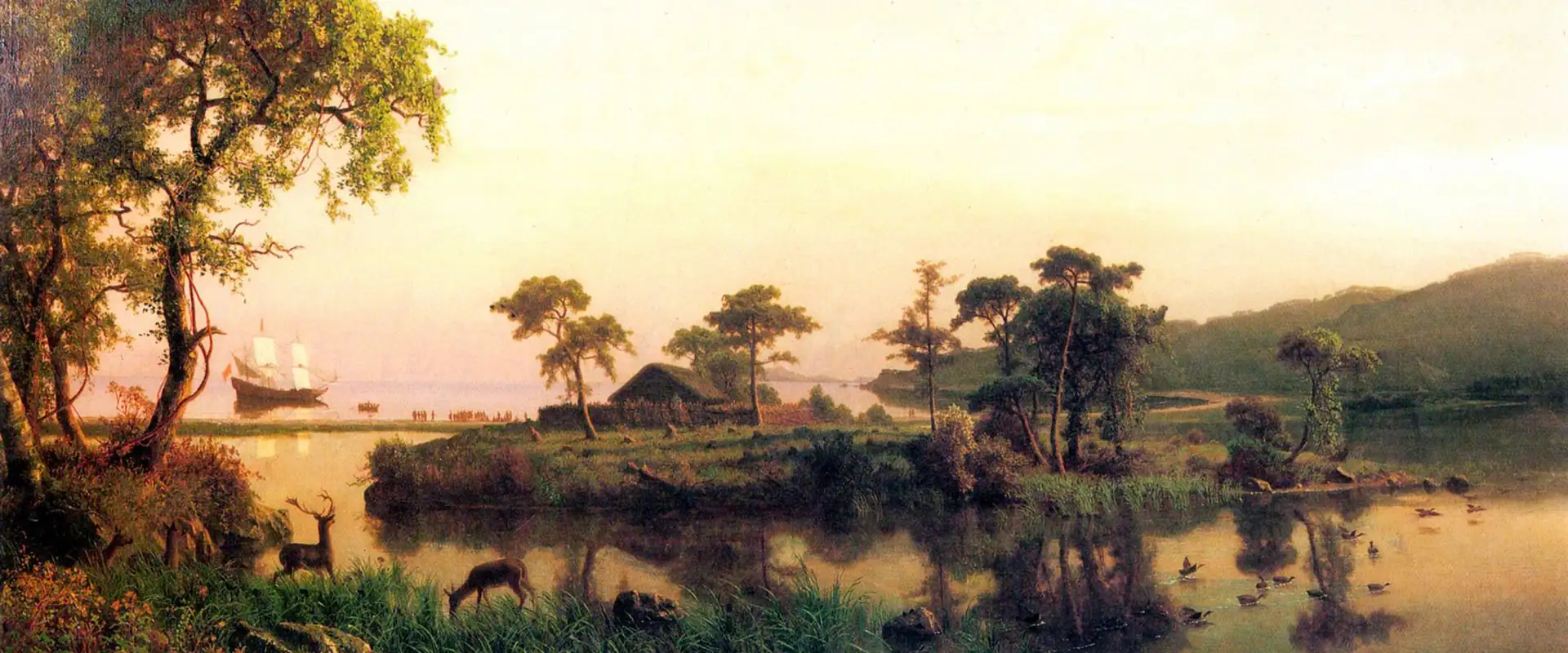The idea of colonization languished until 1602 when Captain Bartholomew Gilbert, son of Sir Humphrey, was the next family member to make the attempt. In company with Co-Captain Bartholomew Gosnold, Gilbert sailed out of Dartmouth England in March of 1602 with thirty-two men in all. On their small ship, Concord, they crossed the North Atlantic in six weeks by a route dramatically shorter than any used before, arriving on the southern Maine coast on May 14. They made at least some contact with the Native American population, which they were able to discern had enough contact with Spanish fishermen on the Grand Banks to speak pidgin Basque with foreigners. Then they sailed south and were the first English to arrive at Cape Cod, naming it for the great schools of the fish they found there. In short order they encountered and explored Martha’s Vineyard, Nantucket, and the Elizabeth Islands, naming them and many places or natural features on them all.

Engraved illustration of Bartholomew Gosnold landing, offering trade goods to native people.
They sailed as far west as what we now call Buzzard’s Bay and set up camp on Cuttyhunk Island. There they planted an experimental garden, and established friendly contact with the native tribes with whom they traded for food and a great deal of sassafras which was valued in England. Gilbert and Gosnold decided to establish a colony. When provisions and equipment were inventoried, however, they were found insufficient to sustain both a colony and the Concord‘s return to England. The garden’s plants, nine inches tall just two weeks after planting, were noted as an indication of extremely fertile soil; then all hands packed up and sailed back to England where the sassafras sold for a handsome profit.
Bartholomew Gilbert was at sea again in 1603 in a ship provided by uncle Sir Walter Raleigh, charged with exploring the Carolina barrier islands for any sign of the Lost Colonists of Roanoke. Captain Gilbert sailed first to the Caribbean to cut and load twenty tons of lignum vitae wood to pay for the voyage, after which he proceeded north. He overshot the Carolinas and on July 29 he and his crew became the first Englishmen to enter Chesapeake Bay, a name he transliterated from the Native American K’tchisipik. A landing on the Eastern Shore, today also known as the Delmarva Peninsula, ended in disaster as Gilbert and two other men were killed in a skirmish with a native tribe. Survivors of the attack retreated to the ship and returned immediately to England. It would be four more years before another attempt at colonization could be organized, funded and staffed.

